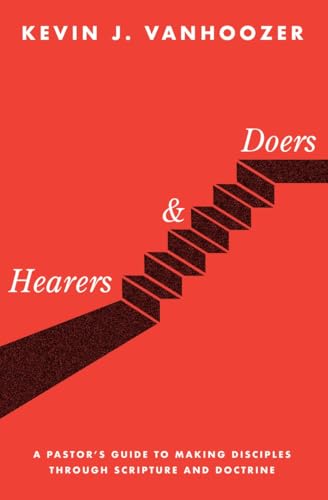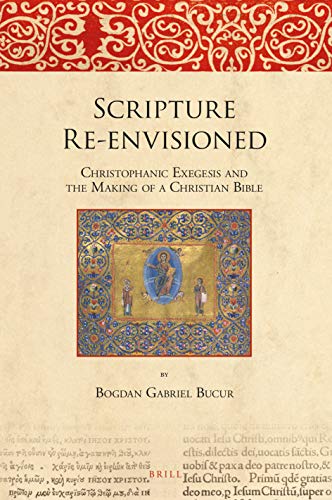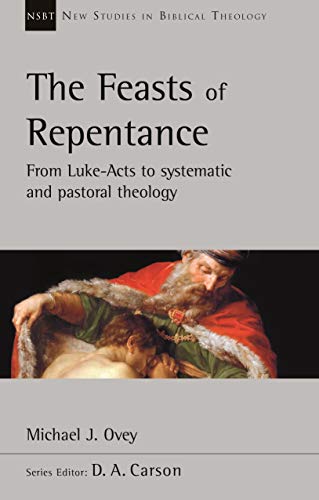Hearers and Doers: A Pastor’s Guide to Making Disciples Through Scripture and Doctrine
Written by Kevin J. Vanhoozer Reviewed By Eric NewtonIn Hearers and Doers Kevin Vanhoozer, research professor of systematic theology at Trinity Evangelical Divinity School, casts a vision for pastoral ministry as discipleship through doctrine (p. 237). In contrast to contemporary conceptions of health and wellness, Vanhoozer envisions the church as a “fitness culture” known for exposing cultural idols, prizing the theological reading of Scripture, and imaging Jesus Christ to the glory of God (pp. xiv–xv, 245). In other words, pastoral teaching is an exercise program that trains disciples to live according to the gospel, instead of being captivated by prevailing ideologies (p. xxv).
Hearers and Doers divides into two sections, “Warming Up: Why Discipleship Matters” and “Working Out: How Discipleship Happens.” In the first two chapters Vanhoozer introduces Charles Taylor’s category of social imaginary—“the metaphors and stories by which we live” (p. 9)—and evaluates three in North American culture: medicine and health care, diet and nutrition, and exercise and training. This critique illustrates that discipleship requires “deprogramming … powerful cultural myths” before “reprogramming” in gospel truth (p. 15).
Chapters three and four present the theological alternative. Doctrine is direction for those God has awakened to “walk the Way of Jesus Christ” (p. 60). Christian fitness requires doing the Word, not simply hearing it, just like physical fitness requires actual reps and laps. Therefore, “fit” disciples develop the skills of reading Scripture theologically as the Triune God’s redemptive story and making choices shaped by this “evangelical imaginary” (p. 60).
The “workout” section of Hearers and Doers first considers the role of pastor (ch. 5) and church (ch. 6). Pastors must visualize ministry not in terms of contemporary leadership metaphors but in biblical images (e.g., shepherd) while maintaining an eschatological viewpoint, “to look at a sinner and see a saint” (p. 124). The church is the “company of the gospel” who improvise the Script contextually, especially through corporate liturgy. Practicing baptism and the Lord’s Supper “forms disciples to conform to reality” (p. 153).
Chapter seven extols the virtue of catholicity in contradistinction to autonomy. Sola Scriptura does not abolish tradition but subordinates it. “Scripture alone authorizes, but the Scripture that authorizes is not alone” (p. 176). Also, the accompanying doctrine of the priesthood of all believers is not “popehood,” a license for self-governing interpretation (p. 177). Rather, the Spirit has guided the church corporate to rightly interpret Scripture, as patterned at the Jerusalem Council and expressed in the ancient creeds (p. 180). Varying interpretations are not cause for dismay but opportunities to learn from fellow participants in a “mere Protestant Christianity” that reads Scripture in Trinitarian, global, and humble ways (p. 186).
The goal toward which doctrinal discipleship heads is Christlikeness. Chapter eight reiterates the importance of practicing the truth. By “core exercises” such as preaching Christ from the Old Testament and shaping a Christian outlook on death, pastor-teachers serve as “engines who convert the hearing of God’s word (the power of truth) into the doing of God’s word (walking in truth)” (p. 242).
It is easy to sympathize with this volume’s vision for pastoral vocation. Paul wrote to Titus “to further the faith of God’s chosen ones and the knowledge of the truth that is in keeping with godliness” (1:1 NET). Knowledge unapplied is an empty grasp of truth. As an aside, one key connection between pastoral vocation and doctrine left unexplored in Hearers and Doers is the pastor’s role as evangelical exemplar. The Pastoral Epistles underscore the minister’s personal need to correlate confession and practice (e.g., 1 Tim 4:12, 15).
Furthermore, Vanhoozer practices what he pictures, embodying the imagination that he commends in Hearers and Doers. Witty turns-of-phrase abound (e.g., “Wittenberg, we have a problem,” p. 169), though at times theodramatic language itself seems to take center stage (e.g., the six-fold portrayal of the church as theater, pp. 140–42). But his depictive comparison of popular social imaginaries and evangelical fitness is compelling, not just visually but biblically. After all, spiritual discipline requires being “nourished on the words of the faith and of the [healthy] doctrine which you have been following” (1 Tim 4:6 NASB).
Two weaknesses also merit remark. First, Vanhoozer conveys how “overcom[ing] the theory/practice dichotomy characteristic of so many seminaries” has animated his theological model (p. 145). But this laudable motivation runs the risk of conflating belief and practice. He writes, for example, “The doctrines of creation, incarnation, Trinity, and atonement are not theoretical abstractions—things primarily to be thought—but meaningful patterns that provide orientation for everyday existence, and hence things primarily to be lived” (p. 134, original emphasis). To live the Trinity or atonement is a confusing direction at best. Theological indicatives ground imperatives but are not their equivalent.
Second, while Hearers and Doers helpfully relates the “ministerial” role of doctrine to the magisterial authority of Scripture (p. 184), its commendation of Protestant catholicity raises questions about its limits. If the ancient creeds are “the context in which an individual’s reading of the biblical text makes sense … and exercises its authority” (p. 180), how should that individual interpret Scriptural teaching that gave rise to Protestantism? Should confessions play a more significant role in the doctrinal fitness program? The conversation and “corporate submission” of congregations in sixteenth-century Geneva serve as a worthy prototype only if the interlocutors agree on essential doctrines such as sola Scriptura and sola fide.
Perceived flaws notwithstanding, Hearers and Doers casts an engaging vision through insightful cultural critique, theological synthesis, and artful prose. Its countercultural call for pastors to demythologize dominant cultural stories and disciple through doctrine deserves consideration by those concerned to see Christ formed in their flock.
Eric Newton
Eric Newton
Bob Jones University
Greenville, South Carolina, USA
Other Articles in this Issue
What are we to make of Cultural Marxism? This article seeks to answer that question, first, by outlining the key elements and legacy of classical Marxism; second, by exploring the neo-Marxism of Antonio Gramsci; third, by assessing the main ideas and impact of “the Frankfurt School”; and, fourth, by offering some reflections on (i) the links between these thinkers and various contemporary developments, (ii) the wisdom of employing the term Cultural Marxism, and (iii) how Christians should respond to the current “culture wars” that are polarizing the Western world.
The diverse essays in Stanley Rosenberg’s edited volume Finding Ourselves After Darwin: Conversations on the Image of God, Original Sin, and the Problem of Evil (Grand Rapids: Baker Academic, 2018) offer a Christian analysis of the human person in light of evolutionary thinking...
Do Formal Equivalent Translations Reflect a Higher View of Plenary, Verbal Inspiration?
by William D. MounceThe article begins by establishing five categories of translation theory and argues that functional translations like the NIV do in fact reflect the meaning of every Greek word, but not in the same way as formal equivalent translations do...






